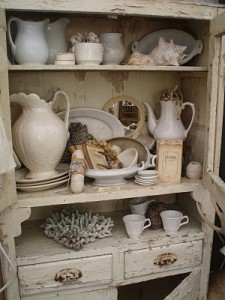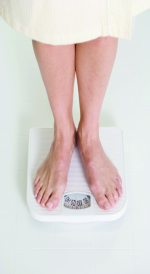 Are you ready to downsize? Do you get stuck when trying to let go of items to which you have a sentimental attachment? Well, here are some tips to help you move forward:
Are you ready to downsize? Do you get stuck when trying to let go of items to which you have a sentimental attachment? Well, here are some tips to help you move forward:
HAVE A TREASURE HUNT
Consider the process of downsizing a treasure hunt. You’ve collected and inherited a plethora of items, now it’s time to select your treasures and let go of the rest.
USE MEMORY TRIGGERS
Ask yourself if you have other items that can serve as better memory triggers. For example, could you let go of brochures or souvenirs from travels because you have photos of the trip? Could you let go of Grandma’s broken sewing machine because you have her pearls? Another great option is to photograph items to preserve your memories, then release what you don’t use or love.
THE HEAD VS. HEART APPROACH
Let your storage space dictate how many of a category you will keep. You might decide that one shelf in your closet is practical to store your vases. If you have more than will fit that space, let go of your least favorite or seldom used ones.
Consider using numbers to help keep you logical, rather than emotional. For example, ask yourself how many of a specific item seems practical to keep. Four black purses seems generous. You have nine. Let go of five of your least favorite ones.
THE JOY FACTOR
Another way numbers help is by using The Joy Factor. Use a scale of 1 to 5, with 5 meaning ‘great joy‘ and 1 meaning ‘not so much’. Now, ask yourself where on the scale an items falls. If you want to downsize in a big way — you might keep only 5’s as these are your treasures.
PLEASE DON’T TOUCH!
Some people find that holding and touching an item greatly increases their attachment. If that’s you, you’ll want to have a friend, family member, or professional organizer help you. Have the other person hold up items so you can say “yay” or “nay.”
Letting go can be hard, but I assure you that the results will be well worth the effort. Living in a clutter-free environment promotes clarity, focus, peace and happiness.
What items do you find hold the most sentimental attachment?
 With the holidays and photo taking season coming up, it’s not too early to start taking some steps toward organization. This will make it easier to retrieve photos, create cards and books (think gifts).
With the holidays and photo taking season coming up, it’s not too early to start taking some steps toward organization. This will make it easier to retrieve photos, create cards and books (think gifts).
Because organizing the past can be overwhelming some people choose to start with the current. My personal choice is to do the old ones as well. Decide whether you want to go back and clean up all of your old photos OR do you want to start from now.
Download photos from your phone, camera and tablet frequently. If you lose your phone- your photos could be gone forever.
There are many software programs, some are great for sharing, some are great for printing cards, invitations and pretty much whatever you want, others not so much. Choose a program that meets your needs. Some of the more popular ones are: Linea, Shutterfly, Picasa, Flickr, and there are many more available your computer/laptop may already have software on it. If you are a Mac user iPhoto is good for organization.
When you are looking through your photos delete what you can, they take up a lot of space and we don’t want to use up space for bad photos.
Delete:
Some programs will allow you to tag your photos and rate them. That will help you sort them more easily if you are searching for something. This may not be necessary but it is available in some programs.
Now you are ready! You can easily create and print your cards, photo books photos on canvas and the myriad of other products available.
The final step is to BACK UP, BACK UP, BACK UP.
 I was at Target the other day and parked right next to the area where you put your shopping cart after you load your car with your purchases. There was a woman parked right next to me, so she was 1 parking space away from the cart area. She loaded the back of her car with her purchases and then proceeded to push her cart between her car, my car, and the 2 cars in front of ours. It would have taken her the same amount of time to walk her cart to the area where the carts are stored as it did for her to walk her cart to the area in front of all 4 cars.
I was at Target the other day and parked right next to the area where you put your shopping cart after you load your car with your purchases. There was a woman parked right next to me, so she was 1 parking space away from the cart area. She loaded the back of her car with her purchases and then proceeded to push her cart between her car, my car, and the 2 cars in front of ours. It would have taken her the same amount of time to walk her cart to the area where the carts are stored as it did for her to walk her cart to the area in front of all 4 cars.
I did nothing, which didn’t feel right. When I asked friends what they would have done, I got a myriad of answers, such as take the high road and move the cart, she wasn’t thinking, would have done what you did, should have said something to her. But, it did get me thinking why shopping carts have homes in parking lots and how that relates to organizing.
We all know the obvious answers – they are preventing other cars from getting dinged and making it easier for the employees to bring all the carts back into the store. From a Professional Organizer’s point of view, I like to keep everything that is the same in one or two areas, whether it is in my home, my office, or my car. I only have to remember one or two places to look for what I need. When I don’t “assign a home” to an item, it gets lost, and I end up buying the same item over and over again. Besides wasting time looking for something and not being able to find it, I’ve now spent more money on something I already have.
It is the same for the shopping carts. It is more efficient for the employees to get the carts from their designated areas (think time management and productivity) and bring them back to the stores for others to use. It is also a money-saver for the store, since they won’t have to replace lost or missing carts.
This story illustrates why “assigning a home” is so important. Keeping like with like makes it easier to find things, makes you more productive, saves you money, and gives you the freedom to do those activities you enjoy doing vs. having to go out and waste time purchasing the same item again.
 As I was driving the other day listening to NPR, I heard a provocative story suggesting that researchers should stop spending millions of dollars comparing the content of all the various diets programs on the market today. Instead, they should focus their studies on how to effectively change behaviors associated with weight gain. As a Professional Organizer, this piqued my interest.
As I was driving the other day listening to NPR, I heard a provocative story suggesting that researchers should stop spending millions of dollars comparing the content of all the various diets programs on the market today. Instead, they should focus their studies on how to effectively change behaviors associated with weight gain. As a Professional Organizer, this piqued my interest.
Featured on the NPR program “Here And Now,” was Carey Goldberg, health reporter for WBUR in Boston, commenting on a recent paper published in the Journal of the American Medical Association. Analyzing different well-known diet programs, the report concluded that the various diet programs — on average — are equally well suited for losing weight. Therefore, one could pick and choose any one of the diet programs that looks appealing to them and get pretty much the same result.
If the report concludes that it doesn’t matter what diet program you choose for losing weight, then why are these programs ineffective for so many participants over time? Why is it so common that dieters gain back the weight they lost soon after they stop dieting? The key is “adherence” – sticking to healthier eating habits over time. Instead of continuing to spend millions looking at and worrying about the specific content of the diet programs on the market, this report suggests that we need to understand the context of the individual dieter, and therein lies the key to adherence. We need to shift the focus from simply counting calories and carbs, and look toward behavioral change and how to make those changes last – forever.
Behavioral scientists studying the effects of dieting over time look at factors such as why people crave different foods and how environmental factors, such as family traditions, affect their dietary preferences. They found that the one common factor that undermined the best of intentions around dieting and healthier eating habits is stress. The NPR story stated that, “researchers often hear dieters say that they want to lose weight, but life gets in the way.” The root problem is woven in the feelings experienced, when “life gets in the way” and that is a behavioral issue – not a nutritional one.
Just like the dieting industry, the organizing industry has zillions of products to choose from, and still people feel overwhelmed and stressed. For many, the products don’t deliver on their promises of freedom and ease over time. Before clients call us, many of them have been on a number of “organizing diets” and have not reached or maintained their organizing goals over time. Sleek new organizing products and best intentions are easily de-railed when “life gets in the way.”
As Professional Organizers, we know what makes the biggest difference to someone staying organized over time. It isn’t simply which storage bin we use but rather, that the person develops the habit to actually use the bin over time. All the different storage bins, calendar systems, time management tips, electronic gadgets, apps, etc., do not ensure that one will achieve a state of organization that lasts. They are only the tools we use to create an environment that supports an organized life-style. The actual change towards living an organized life comes from within the individual. Effective behavioral change resets our personal compass, and points us toward our goals and aspirations. “Adherence” to these behavioral changes, ensures us it will last forever!
So the point of this story is…If you want to lose weight, don’t stress about which diet program to choose. Choose the one that appeals to you since they all, on average, work about the same. If you want to keep the weight you lose off for years to come, work with a behavioral specialist to create your unique practices of adherence that promote healthier eating habits. And, if you want to decrease the stress of “life gets in the way,” create an environment that supports your new healthier habits over time — then call one of us. Professional Organizers love supporting behavioral changes that last forever.
http://commonhealth.wbur.org/about/carey-goldberg
 Need help making decisions on the many items cluttering up your beautiful home? Why not start with NAPO-GPC? What? You’re not really sure what that is? It’s the National Association of Professional Organizers Greater Philadelphia Chapter: whew — that’s a mouthful.
Need help making decisions on the many items cluttering up your beautiful home? Why not start with NAPO-GPC? What? You’re not really sure what that is? It’s the National Association of Professional Organizers Greater Philadelphia Chapter: whew — that’s a mouthful.
We are eighty members strong. Plus associate members which include Philly Junk and Impact Thrift Stores. The chapter started in 1996 and has grown by leaps and bounds. Once a month we meet for networking, professional development workshops, and educational programs. Workshop topics include ADD, Feng Shui, chronically disorganized, and senior relocations. Our library has close to one thousand resources for the members to rent including books, CD’s, and videos.
Did you get to meet us at the Philly Home Show? Perhaps you saw us on the NBC 10! Show or called WHYY and spoke to us on the phone when you gave your donation. You probably heard about Project Thanks, where we organized the home of a veteran after she completed three tours in Afghanistan. We also plan shredding events and collected thousands of shoes for Soles4Souls. This winter we are planning on helping Cradles to Crayons.
Our members are amazing! Some are strictly residential organizers, some corporate, others specialize in home staging, home design, working with clients who have disabilities, and collections including photos and antiques. Coaching is part of the organizing process too, including holistic life coaches, business coaches, academic coaches, as well as consultants.
Check out our website at NAPO-GPC.org. There you will find even more information about our wonderful association as well as our blog with many tips and hints to help you get started on your organizing projects. When you are ready to hire an expert click on “Find an Organizer”, you will be glad you did!
 Why Haven’t I Done This Before?
Why Haven’t I Done This Before?
Are you asking yourself any of these questions? What does this mean?
The concept of shopping in your closet is- Know what you own, Create options you love, Wear what looks good & Makes you feel good, and Add what you are missing.
Simply, it’s seeing what you have, distinguishing what your patterns are, coordinating items, and getting into action!
SUGGESTION: Have a pen & paper ready to record your observations
It’s time to get into your closet. If you can’t manage that, then you should clear a path into it, maybe with some professional help from an organizer!
1. Observe it first. Then, if possible group like items together…pants with pants, sweaters with sweaters and so on.
2. Notice how many of the same item you have in the same color ( sound familiar!) For example- You notice you have 12 black turtlenecks? – couldn’t find them and purchased more? Did you get them on sale? Are they in your favorite color or colors?
3. Next is to take an inventory of what’s in every category. First it’s a broad look. This will inform you of what’s missing. Also you are gathering information about your colors, styles you tend to buy, styles you prefer to wear, and the correct size that fits now! At this point, you can check sizes and conditions of the garments. Pull out soiled, damaged, items for repair, outdated, and items you don’t feel good in and are the incorrect size. Now is the time to purge and bag the items “Leaving” your closet (if you haven’t done so already!) Look for what stands out, like the items you like or don’t like and the items that fit. All the items you want from each category that remain will become your “core” wardrobe.
4. At this point you will have noticed your buying patterns. Ask yourself questions, because this might help you reveal the “why’s” to what you have in your closet. Now you can make some conscious choices. It would benefit you to stay open to this exercise!
5. This is the time you can start coordinating outfits. You can split up sets and use items separately. You may have purged a part of a set which is fine! If this isn’t your forte then you may consider getting some help from a wardrobe consultant/organizer.
You can have a lot of fun creating new outfits and blending pieces together. At this point you may need to list the colors or items missing for these coordinates/outfits. This will become your new shopping list. Start using your new insights. These insights about your buying habits will help you from buying items that you don’t need or want.
Using this method will result in some new fresh looks for the season. Generally using items you already had that either you couldn’t see, find or realize could work with something else. This might improve your impulse buying! Also another outcome of this will be, that you have cleared your closet space and can practice staying organized!
Have some fun with this and let your creative juices flow!!